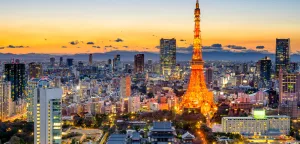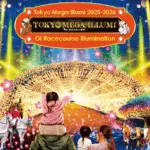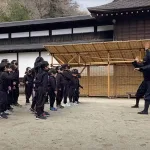Hi, there! As Japan welcomes more international visitors, we as a local resident in Japan also see the change that many are choosing to explore by car.
This guide, packed with local Japanese insights, is your key to a safe and enjoyable road trip in Japan. Whether you’re planning to rent a car or already in Japan, we’ve got you covered with essential info and insider tips!
From must-know rules to hidden gems off the beaten path, we’ll help you navigate Japan’s roads like a pro. Discover the joy of roadside stations, interesting Japanese way of driving etiquette, and most imporantly things you need to know when driving in Japan like typical traffic violation and recent trend of road accident.

Insider tip: Especially trip to Hokkaido and Okinawa, we do recommend car rental, as public transportation is not well developed.
Ready to hit the road? Let’s make your Japanese driving adventure unforgettable and of course safe!!😊🚘
1. Essential Information for Renting a Car in Japan
Why Rent a Car in Japan?

While Japan boasts famous locations like Tokyo, Kyoto, and Osaka, there are many other captivating places to explore. When traveling in Japan, opting for a rental car is actually highly recommended. Here’s why:
- Reach destinations efficiently and flexibly
- Save money traveling in groups (vs train, flights)
- Transport luggage with ease, anywhere
- Navigate effortlessly with smartphone connectivity
Renting a car gives you the freedom to explore Japan at your own pace. Whether you’re venturing into the countryside or hopping between cities, a rental car offers unmatched convenience and flexibility.
For example, when visiting Osaka or Kyoto, having a rental car makes travel extremely convenient. You can easily create an itinerary where you visit Nara in the morning, enjoy Kobe beef steak in Kobe in the afternoon, and return to your hotel in Osaka at night.
Moreover, we strongly recommend renting a car when visiting Hokkaido or Okinawa, as public transportation in these areas is not as extensive as in other parts of Japan.
Insider’s Tip: When driving in Hokkaido, be extra cautious about accidents. Head-on collisions and single-vehicle crashes due to speeding are particularly common here compared to the rest of Japan. Why? The roads are often empty, tempting drivers to speed or ignore stop signs. Stay safe and follow the rules!
👉 If you want to freely explore Tokyo by car, consider the Car Rental Service with a Driver.
Where to Find Best Rental Cars?
We love Rentalcars.com for finding the perfect rental car in Japan. As the world’s largest online car rental service, it offers peace of mind for international travelers. Its key feature is the ability to compare multiple deals based on your destination and dates, helping you select the best option for your needs and budget.
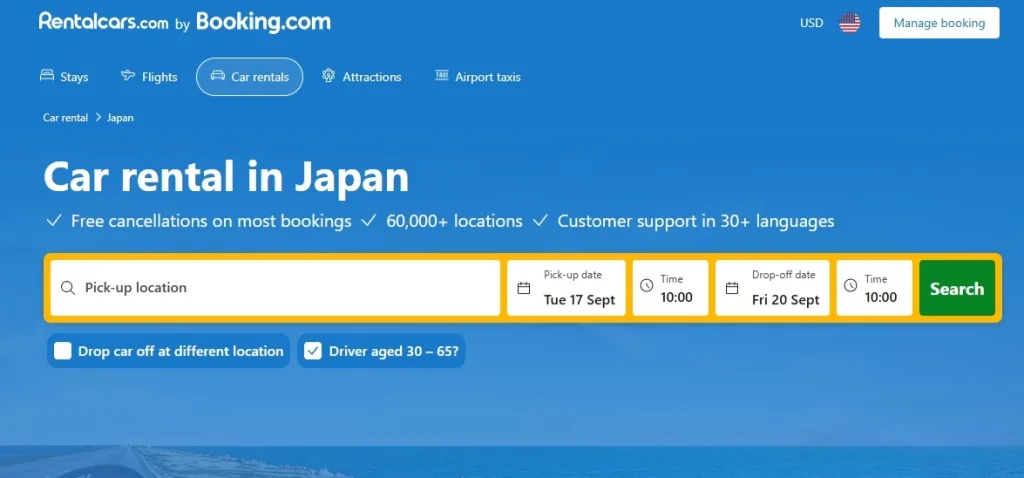
With partnerships with major Japanese rental companies and coverage across all cities, it ensures you’re seeing the best deals from all possible sources. By using this service, you can confidently book your rental car, knowing you’ve secured the most suitable vehicle for your Japanese adventure.
Some tips when choosing rental cars in Japan
Let us share some insider tips from a local Japanese perspective:😊
When browsing rental cars on Rentalcars.com, you’ll see lots of options. Here’s what to keep in mind:
- 🏢Go for well-known companies: In Japan, famous rental agencies tend to have newer, cleaner cars. Lesser-known companies might give you older or smelly vehicles. Stick with big names like Nissan Rent-A-Car, Nippon Rent-A-Car, ORIX, or Times. Alamo and Europcar are also good as they partner with these Japanese companies.
- ⚠️Don’t go too small: Popular choices like Toyota Yaris or Mazda 2 Demio have limited trunk space. If you’ve got lots of luggage or a stroller, you might struggle and chances are you need to send the extra luggage separetely… Consider your luggage when picking a car size.
- ⛽Full tank return policy: In Japan, you’re expected to return the car with a full tank. If you can’t make it to a gas station, they’ll charge you a bit extra for refueling. It’s pricier but can be convenient if you’re short on time.
👉 Or do you want to zoom through the streets of Tokyo? Try the Go-Kart experience in Tokyo! 💨💨
How to Pump Gas at Japanese Service Stations
Let us introduce you on how to fill up gas at a Gas Station in Japan in 4 steps, which will be helpful when you rent a car in Japan. The names of gas types may vary depending on the Gas Station, but generally, there are three types: “High Octane (ハイオク)”, “Regular(レギュラー)”, and “Diesel (軽油)”.
Step1: Touch the screen initially

At “ENEOS“, one of the most common Gas Station chains in Japan, you start by touching the screen. Next, you choose your payment method. If you’re using a credit card, you can simply insert it.
Step2: Select the gas type and amount

Once your credit card is successfully read, you’ll see a screen for selecting the type of fuel, like in the photo.
For most rental cars, you’ll choose the red “Regular” option in the middle. There are typically two main ways to fill up: either filling the Gas Tank completely or deciding on a specific amount of fuel or money to spend. For rental cars in Japan, it’s common practice to return the car with a full tank, so let’s select the “Full Tank” option.
Step3: Touch the static electricity removal sheet

After deciding on the type of gas and the amount to fill, it’s finally time to pump gas into your car. Before grabbing the gas handle, touch the static electricity removal sheet marked with this hand symbol. This safely discharges any static electricity accumulated on your body without causing sparks.
Final Step: Pump the selected gas

When pumping gas, be careful not to make mistakes. In the case of ENEOS, red is for Regular, yellow for High Octane, and green for Diesel. Even if you accidentally pick up the wrong nozzle, many stations have a system in place to prevent mistakes, so gas won’t come out if it doesn’t match your selection. Pull the lever to start pumping, and when it stops automatically, replace the nozzle. A receipt will be printed, which you should keep. That’s it!
What you need to know when driving in Japan

Before you hit the road, there are a few important things to keep in mind. Driving in Japan can be an exciting adventure, but it comes with its own unique quirks and requirements. To make sure your journey is smooth, safe, and totally legal, let’s go over the key points:
- Cars are right-hand drive and you’ll be driving on the left side of the road
- You’ll need a valid international driving permit along with your regular license
- It’s smart to get comprehensive insurance coverage for your trip
What we’d like to emphasize is the road. If you’re coming from a country where you drive on the right, be extra careful! We’ve seen in TV news that more accidents involving foreign drivers, especially in Hokkaido and Okinawa. Especially when you make turns, do go into the opposite road…😅
2. Must-Have Equipment for Driving a Rental Car
Tech on the Go: The USB Cable You Need

When driving a rental car in Japan, a crucial piece of equipment is a USB cable for your smartphone. Apple CarPlay can be a game-changer for first-time visitors, ensuring a stress-free driving experience. Most rental cars in Japan have USB Type A ports, so bring a compatible cable (Lightning for iPhones, USB-C for Android and iPhone 15 above) from your home country or simply buy it in Japan. This simple addition will significantly enhance your navigation. Your rental car can feel like yours with your music, your favorite navigation app, and you can even get phone calls.😊 Check with your rental company about the specific USB port type in your vehicle.
For Winter Driving: Staying Safe in Snowy Conditions

When driving in snowy regions, especially Hokkaido, Tohoku Region, Niigata and other Japan Sea snowfall areas, we as locals feel the importance of proper winter equipment. The timing, for example Hokkaido, it starts snowing as early as November. Studless winter tires or tire chains are mandatory on snowy roads, and opting for a 4WD vehicle adds safety and traction. What’s interesting is that even Japanese drivers from non-snowy regions like Tokyo, Kyoto and Osaka often get into accidents every winter due to improper equipment, so take this seriousl👉
3. Japanese Road Signs
While using navigation apps like Apple CarPlay can guide you to your destination in Japan (note that Google Maps is far more popular and user-friendly in Japan than Apple’s navigation), it’s crucial to remember that Japan has its own traffic rules and road signs. Getting caught violating traffic laws during your trip could cost you not just money in fines, but also PRECIOUS vacation time. You don’t want that happen, right? To help you avoid this, we’ll introduce some important road signs that we as local drivers be always scared of, no, be aware of!

This sign means ‘stop‘. At locations with this stop sign, you must come to a complete stop before the intersection. Violations incur a 7,000 yen fine. This sign is so important that Japanese police often watch for offenders from hidden patrol cars near intersections behind trees. Better to follow that sign.
Next, this is a ‘one-way street‘ sign. It means you can only proceed in the direction of the arrow beyond this point. Driving against the arrow’s direction violates traffic law and is subject to penalties. You will often see this sign in narrow roads and in central town.


Third, the ‘no entry‘ sign is typically found at the exit of one-way streets or intersections. It means ‘do not enter‘ this road from this direction. Obeying this sign is crucial to avoid traffic violations and ensure safe driving during your visit to Japan. Police would be hiding and seeking the violators..
The last one, the ‘bicycle navigation line‘ sign indicates the designated path and direction for cyclists. As drivers, we must be careful not to hit cyclists, especially when turning left. Always watch out for bikes to avoid accidents.

4. Tips to Enhance Your Japan Road Trip Experience
Over 800 Service Areas on Japanese Highways
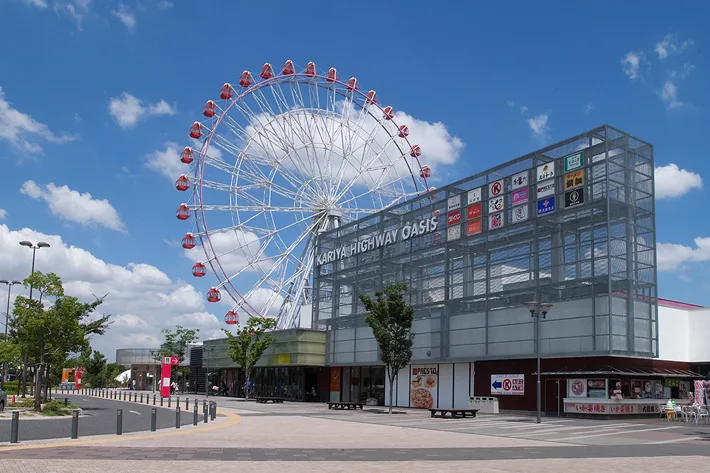
Japanese highways feature service areas at regular intervals. Large service areas are bustling hubs offering restaurants, restrooms, gas stations, hotels, hot springs, ferris wheels (surprising, right?), souvenir shops, convenience stores, and food stalls. While driving your rental car on the highway, you’ll see signs indicating distances to upcoming service areas. It can be fun to stop for meals, restroom breaks, or to buy unique local souvenirs. Don’t worry – even smaller service areas always have toilets and vending machines.
One tip: while gas stations at service areas are convenient, they tend to be pricier. It’s more economical to fill up before entering the highway.😊
Michi-no-Eki: Japan’s Beloved Roadside Stations


“Michi-no-Eki” (Literally means Roadside Stations) are facilities beloved by travelers. Why are they so popular? These stations offer restaurants serving delicious local cuisine, shops selling regional specialties, and opportunities to buy fresh produce at great prices. Michi-no-Eki are cherished by locals and tourists alike. Can you guess how many there are in Japan? As of June 2024, there are over 1,200 stations across the country! When planning your rental car trip in Japan, try searching for “your destination + Michi-no-Eki” and make sure to stop by one during your journey.
Recommended roadside stations (Michi-no-Eki) by area in Japan
There are popular roadside stations (Michi-no-Eki) in each region of Japan, so we’ve created a list with Tripadvisor links. If any are close to your destination, please consider visiting them. 😊
In Hokkaido, the Furano Marche in Furano is also wonderful, but there are too many great ones to list them all, so please explore various stations on your own. By the way, our favorite roadside station in Hokkaido is Nakasatsunai. The BBQ and fried chicken made with local chicken in Nakasatsunai, as well as fresh corn in the summer, are incredibly delicious and mind-blowing.🤯
Hokkaido
Tohoku
Kanto
Hokuriku (Including Kanazawa, Toyama, Niigata)
Chubu, Tokai (Including Shizuoka, Aichi)
Kansai (Including Osaka, Kyoto, Kobe)
Shikoku
Kyushu
Okinawa
Some of the Roadside Stations listed above are places we have actually visited, and we have thoroughly researched all of them, including their reputations, in advance. So you can feel confident about visiting them.
Again, Japan has over 1,200 roadside stations, so there are many more great ones besides above these! When driving in Japan, search for “Roadside Station” or “Michi-no-Eki” (literally “Road Station”) on Google Maps or similar apps to find nearby options.😊
Tokyo Only: Wisely use Parking Meters

Only in Tokyo, parking meters offer short-term parking in busy areas. They typically charge 300 yen for 60 minutes (some have 20 or 40-minute options), much cheaper than private lots in popular spots. However, finding an open meter can be competitive. You might need a bit of luck to snag one – may the parking gods be in your favor!”
Top 5 Traffic Violations to Watch Out in Japan

As an honest local who has paid fines for traffic violations more than once, we’d like to share the Top 5 common infractions to be aware of when renting a car in Japan:
- Failing to stop at stop signs
- Speeding
- Use of mobile phones while driving
- Entering prohibited areas
- Running red lights
The most common violation, failing to stop, was mentioned earlier – be extra careful to avoid fines during your trip! Speeding is self-explanatory. Mobile phone use while driving has led to an increase in accidents, resulting in stricter enforcement. It’s illegal to talk on handheld phones, look at phone screens, or focus on navigation screens while driving. Entering prohibited areas includes driving the wrong way on one-way streets or entering no-entry zones, as mentioned in the road sign section. Lastly, running red lights is self-explanatory, but please be especially cautious about this.
5. Interesting Japanese Driving Culture
Driving in Japan not only enriches your travel memories but also provides an excellent opportunity to understand the country better. There are several uniquely Japanese driving customs that we’d like to introduce to you. In particular, the use of hazard lights to say ‘Thank you‘ is quite common, so feel free to try it yourself to drive like a local Japanese person!
Hazard Lights as “Thank You”:
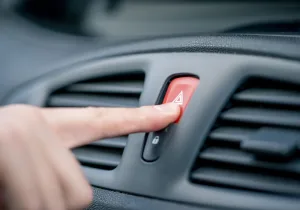
Briefly flashing your hazard lights for a few seconds is a common way to say “thank you” to other drivers who have shown courtesy. You’ll see this a lot when driving in Japan.
Warning of Traffic Jams:

Hazard light again! If you encounter a traffic jam ahead, it’s considerate to turn on your hazard lights to alert drivers behind you of the upcoming slowdown.
Rear-end collisions in traffic jams are increasing in Japan lately. So this is highly recommended! FYI, common causes are distracted driving and smartphone use..
Merging Etiquette:

When merging, it’s expected that cars will alternate – one car from the merging lane, one from the main lane. Avoid trying to merge two cars in a row, as this is considered impolite.
6. Car Rental Japan: FAQ
Last-minute trip to Tokyo?
Let us help!
🏠 Best Tokyo Hotels
Top Luxury Hotel: Aman Tokyo (⭐ 9.8)
Best Ryokan: Hoshinoya Tokyo (⭐ 9.1)
Best Upper Middle: Mitsui Garden Hotel Toyosu Premier (⭐ 9.1)
Best Theme-hotel: Tokyo Disneyland Hotel (⭐ 9.6)
Best Budget: Keisei Richmond Hotel Tokyo Oshiage (⭐ 9.1)
Discover more Tokyo hotel here
🙋 Best Tokyo Tours
Go-Kart in Shibuya (⭐ 4.9/5)
Mt. Fuji & Hakone Day Trip (⭐ 4.3/5)
Ghibli Museum Tour (⭐ 4.6/5)
Kimono Rental & Photo Shooting (⭐ 4.9/5)
🛬 Need a Tokyo Airport Transfer?
Book your Tokyo airport (HND, NRT) transfer here
🚘 Japan Car Rental
Click here to find the best Japan car rental deals
📲 Get an eSim For Japan Trip
Stay connected in Japan: Hassle-free eSIM for your adventure.




